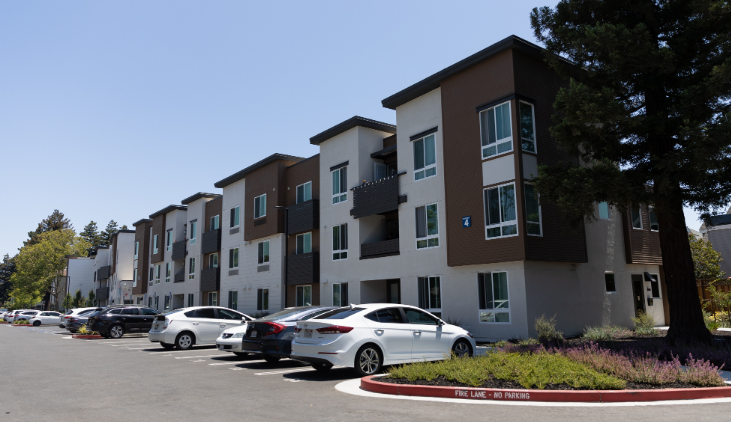“Given the dire affordable housing needs of our communities, we cannot afford to get this wrong,” Regina Celestin Williams, executive director for SV@Home, said of the Housing Element update process. “(The letter) really spells out how much additional time and work it is going to take to meet the state’s requirements. … We hope this letter serves as a wakeup call to jurisdictions, our necessary partners in this work.”
By Malea Martin/Mountain View Voice
PUBLISHED: Oct. 4, 2022
The city of Mountain View will have to go back to the drawing board on its draft Housing Element after state officials identified some major inconsistencies with California law.
The Housing Element is a state-mandated, once-every-eight years process in which jurisdictions prove how they’ll meet housing targets set by Sacramento —and this time around, the state’s requirements are more stringent than ever before. Mountain View’s housing target, also called the Regional Housing Needs Allocation (RHNA), is more than 11,000 net new units.
The city submitted a first draft Housing Element to the state earlier this summer, in which city staff forecasted that Mountain View will not only meet its RHNA obligation, but exceed it by nearly 4,000 units. But in a Sept. 29 letter from the Department of Housing and Community Development (HCD), the state identified some problem areas the city needs to address.
“The draft element addresses many statutory requirements,” the letter states. “However, revisions will be necessary to comply with State Housing Element Law. In particular, the element must clarify its use and definition of ‘pending projects’ in the sites inventory, and provide further analysis to demonstrate its local density bonus requirements are not in violation of State Law.”
The sites inventory is a list of sites that the city can prove may reasonably be developed into housing in the next eight years. The state wants the city to clarify where pending projects are at in the development process so it can determine whether those units can count toward the city’s RHNA obligation.
The state also has concerns about how the city applies the state density bonus law with its local Community Benefit Zoning program, “namely the implementation of floor area ratio (FAR) as a measure of density, and the incompatibility of the State waivers and concessions process with the City’s program,” the letter states.
While the city’s draft identified a number of programs it wants to implement to encourage and promote affordable housing — a key requirement of the Housing Element update process — “most of these programs do not appear to facilitate any meaningful change,” the 12-page letter from HCD states. “Given that most of the city is considered a high-income community, the element could focus on programs that enhance housing mobility and encourage development of more housing choices and affordable housing in an inclusive manner.”
The state also identified some issues with the city meeting its RHNA obligation for affordable units.
The city’s housing element draft indicates that “379 units affordable to very low-income and low-income households have been built or are under construction or approved, but provides no information documenting how affordability of the units was determined,” HCD said. “ … Additionally, the element identifies a number of ‘pending’ projects that are listed in the sites inventory with no additional analysis as to where these projects are in the development process.”
In a statement, Mountain View Chief Communications Officer Lenka Wright said the comments that the city received from HCD “are apparently not unusual.”
“We have learned other cities in our area and across the state have received similar feedback from HCD,” Wright said. “Over the coming weeks, our city team is meeting with HCD to discuss their feedback and clarify the findings. Staff will also be meeting with community members and advocacy groups to discuss their comments to HCD.”
SV@Home, an organization that advocates for affordable housing in Silicon Valley, said in a statement that HCD’s letter to Mountain View is “not a surprise,” but still raises big concerns.
“Given the dire affordable housing needs of our communities, we cannot afford to get this wrong,” Regina Celestin Williams, executive director for SV@Home, said of the Housing Element update process. “(The letter) really spells out how much additional time and work it is going to take to meet the state’s requirements. … We hope this letter serves as a wakeup call to jurisdictions, our necessary partners in this work.”
All Bay Area jurisdictions are required to submit a final, compliant Housing Element to the state by Jan. 31, 2023.
“Mountain View’s draft Housing Element was the first to be submitted from Santa Clara County and the first to be measured against the new, more stringent, state requirements, but the expectations have long been clear,” SV@Home said in the statement. “If the local Housing Elements are not fully certified by May 2023, the state will apply sanctions.”
Mayor Lucas Ramirez told the Voice that, when looking at other jurisdictions that have already gone through the Housing Element update process, receiving this level of feedback from HCD isn’t a huge shock. He said HCD has told jurisdictions to expect up to three rounds of back and forth on Housing Element drafts.
“What this letter reveals is the expectations from the state are much higher than they ever have been,” Ramirez continued. “So while the letter isn’t a surprise, it really is a wakeup call for Santa Clara County jurisdictions that what HCD will require of us is far greater than what we had been accustomed to in previous Housing Element cycles.”

